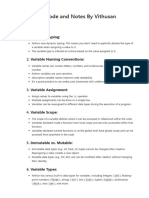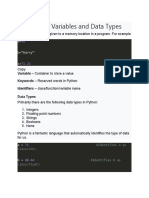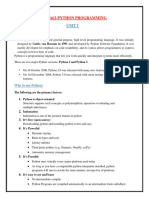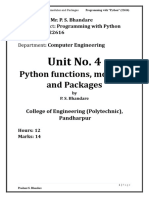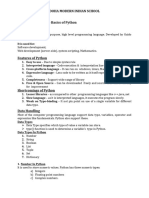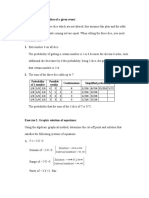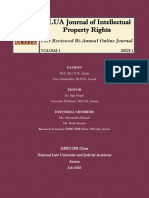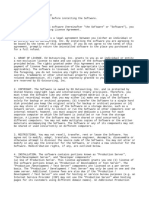0% found this document useful (0 votes)
48 views22 pages1170059794-MQP-1 Answers PYTHON
The document provides an introduction to Python programming, covering its definition, key features, type conversion functions, identifiers, arithmetic operators, parameter passing in functions, string manipulation, local vs global variables, list operations, and exceptions. It includes examples and explanations for various concepts such as type casting, string immutability, and different types of inheritance in Python. Additionally, it discusses built-in functions for lists, exception handling, and custom exceptions.
Uploaded by
Ganesh WajantriCopyright
© © All Rights Reserved
We take content rights seriously. If you suspect this is your content, claim it here.
Available Formats
Download as PDF, TXT or read online on Scribd
0% found this document useful (0 votes)
48 views22 pages1170059794-MQP-1 Answers PYTHON
The document provides an introduction to Python programming, covering its definition, key features, type conversion functions, identifiers, arithmetic operators, parameter passing in functions, string manipulation, local vs global variables, list operations, and exceptions. It includes examples and explanations for various concepts such as type casting, string immutability, and different types of inheritance in Python. Additionally, it discusses built-in functions for lists, exception handling, and custom exceptions.
Uploaded by
Ganesh WajantriCopyright
© © All Rights Reserved
We take content rights seriously. If you suspect this is your content, claim it here.
Available Formats
Download as PDF, TXT or read online on Scribd
/ 22






